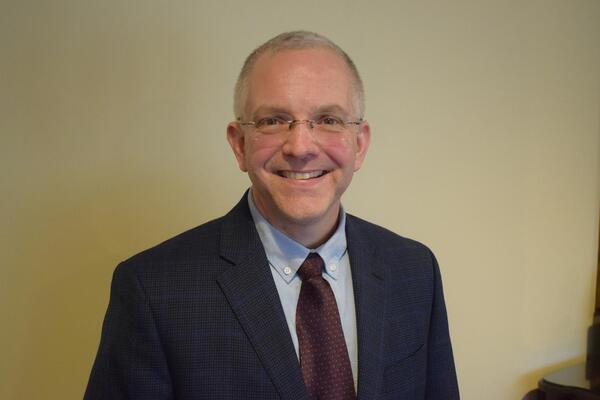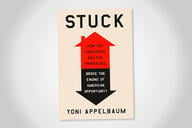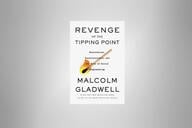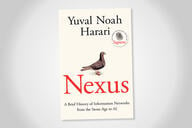You have /5 articles left.
Sign up for a free account or log in.
Recently, Chris Hakala, director of the Center for Excellence in Teaching, Learning and Scholarship at Springfield College, and I worked on a Featured Gig piece together. That exchange reminded me that I was overdue to learn more about Chris’s role and career via a “3 Questions” Q&A. Chris generously agreed to answer my questions.

Q: Tell us about your educational and career path that brought you to your current role at Springfield College. Why did you decide to build your career within the CTL world, and what advice do you have for other traditionally trained academics who might want to follow a similar path?
A: The question of how I became a CTL director is one that I have spent a lot of time thinking about. I was a graduate student at the University of New Hampshire in the early ’90s, and I was required to take a course called Teaching of Psychology. It was taught by the department chair, Dr. Victor Benassi, and it was required of all third-year students. Along with the course, we were required to prepare for our course the summer before and actually teach a small section of Introductory Psychology as the primary instructor of record. We were asked to turn in our materials prior to the course so that Victor could give us feedback and help us gear up for teaching.
We taught that course and were given feedback on our materials, our assessments and, via observations, on our pedagogy. We were even video recorded and were required to watch the video recording with Victor as he commented on the pedagogical choices we made while teaching. It was a humbling experience, to say the least. But, it was fascinating, as we read Dee Fink, Joseph Loman, Wilbert McKeachie, etc. I found a world where pedagogy was studied as an academic discipline as much as it was just a thing that we did.
In the second semester, we had a different instructor, but we still taught with supervision and we were also introduced to the scholarship of teaching and learning. Again, I was so impressed with this work. My area of expertise in graduate school was cognitive psychology, and this work in teaching aligned so well with my work, I guessed it would be a path I might follow at some point in my career. I left graduate school and entered the world of the professoriate. I loved teaching and felt most comfortable in the classroom with students. However, I was often asked by my colleagues to talk about teaching with them.
In 2009, I was a full professor at Western New England University (College, then, actually). I approached our provost about a teaching center. He said no, but I was persistent. After a time, I was given a very, very modest budget and told to bring in a speaker and talk to faculty over pizza. That lit a fire in me, and I ran with the center. We ended up hosting a dozen events and brought in nationally known speakers.
I left WNE in 2014 to be the founding director of the center at Quinnipiac University. It was the first time I was a full-time director. There were resources and faculty and enthusiasm. In my time at Quinnipiac, we built a community of faculty dedicated to engaging in conversation about teaching and learning. And, of course, it wasn’t everyone, but it was a group that did impact student learning.
I left Quinnipiac and headed to Springfield College in 2018. I currently work at Springfield, and I hold the title of professor of psychology along with the director title. In this role, I not only run educational development, but I also oversee instructional design, as well as “other duties as assigned.” In addition, in my role as a professor, I teach at least one course each semester, and I have the pleasure of working with students as an adviser.
This pathway is not atypical of folks in our field. In a book I co-authored in 2024 with Leslie Cramblet Alvarez, we talk about pathways, and although there is no one pathway, the faculty-CTL world is common in higher education.
Q: During the pandemic, we witnessed significant investments in centers for teaching and learning. Recently, however, budget pressure across higher education has put CTL budgets under strain, with some schools merging and/or downsizing their centers. What argument would you make to university leaders that continued investment in their CTLs is strategic and necessary?
A: I am currently working on an article on this very subject! During the pandemic, so many institutions leaned into their centers, relying on them to provide the faculty development to help a beleaguered professoriate transition to emergency remote teaching. However, the shine has worn off, and CTLs are now in some jeopardy. More and more, as institutions are looking at budgets, they see CTLs as luxuries rather than essentials.
This is a mistake on so many levels. First, CTLs tend to be gathering spots for faculty who are invested in teaching and learning. Those faculty who are engaged in these conversations are more likely to devote time (their most valuable resource) to developing better pedagogical approaches. In addition, the messaging to the campus that administrators often want to engage involves signaling support for faculty.
A CTL is oftentimes the strongest support that exists on campus for faculty, and by eliminating or downsizing the CTL, the administration is, de facto, downsizing the support for the faculty on campus. This mistake is one that leaves faculty members feeling isolated and unheard by the administration. The CTL is such a hub on so many campuses that the amount of work they do is essential, but the perspective that there is help out there for faculty is almost as important as the help they eventually receive.
Given that centers look different depending on the institution, I would argue it is also imperative that institutions really evaluate what they need in a center to ensure that they are meeting the needs of faculty. In many cases, a center is developed in response to faculty, but it doesn’t have either a clear direction from the faculty or it isn’t resourced enough to do the work that the faculty need.
As an example, our center is small, but we have educational development, instructional design and grants and sponsored research as part of our charge. We are a small center, but we have some resources (funding from the college, an endowment, and we have in the past had a grant). That allows us to do a variety of things to meet the needs of our faculty. Since I am a science-of-learning specialist, I tend to lean in that direction, but I try to bring in outside voices (from campus and beyond) that speak to other needs. The key is that I listen to other needs.
For example, this summer, faculty are not on contract, but some expressed an interest in talking about course design. To accommodate that, we scheduled a series of conversations at local coffee shops, off campus and in a general area around where faculty live (an idea that emerged from my associate director!). Those events drew a variety of folks, many of whom value the center, but are unable to come during our normal hours at school due to a variety of reasons. On our campus, this made sense. It’s not clear if it makes sense on other campuses. But for us, it was a winner!
That all said, administrators need to lean on their centers for creativity and faculty support. The payoff is huge for the students.
Q: The evolution of generative AI is running ahead of the ability of our colleges and universities to adapt their teaching and learning practices, expectations and culture. How do you think about AI and teaching and learning, and what role might CTLs play in guiding our institutions through this AI instructional crisis/opportunity?
A: Center directors need to be in the game of AI if they are going to serve their students well. There is too much happening, at too fast a rate, for us not to engage in this work. However, we are pushing against the grain, depending on where we position ourselves. I would argue that centers should not be AI police, but rather, AI guides, helping folks understand what AI offers and the limitations.
In addition, frank, honest conversations need to occur with regard to when AI makes sense in teaching and learning and when it does not. The key is to help faculty understand what part of their course is the necessary part for student learning, and ensuring that AI is not doing that work for them.
In many cases, that requires a faculty member to reimagine their course, but as a rule, faculty should be reimagining their courses anyway, at least from time to time!



